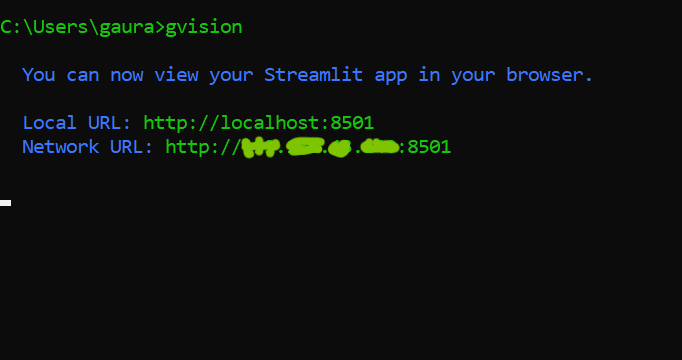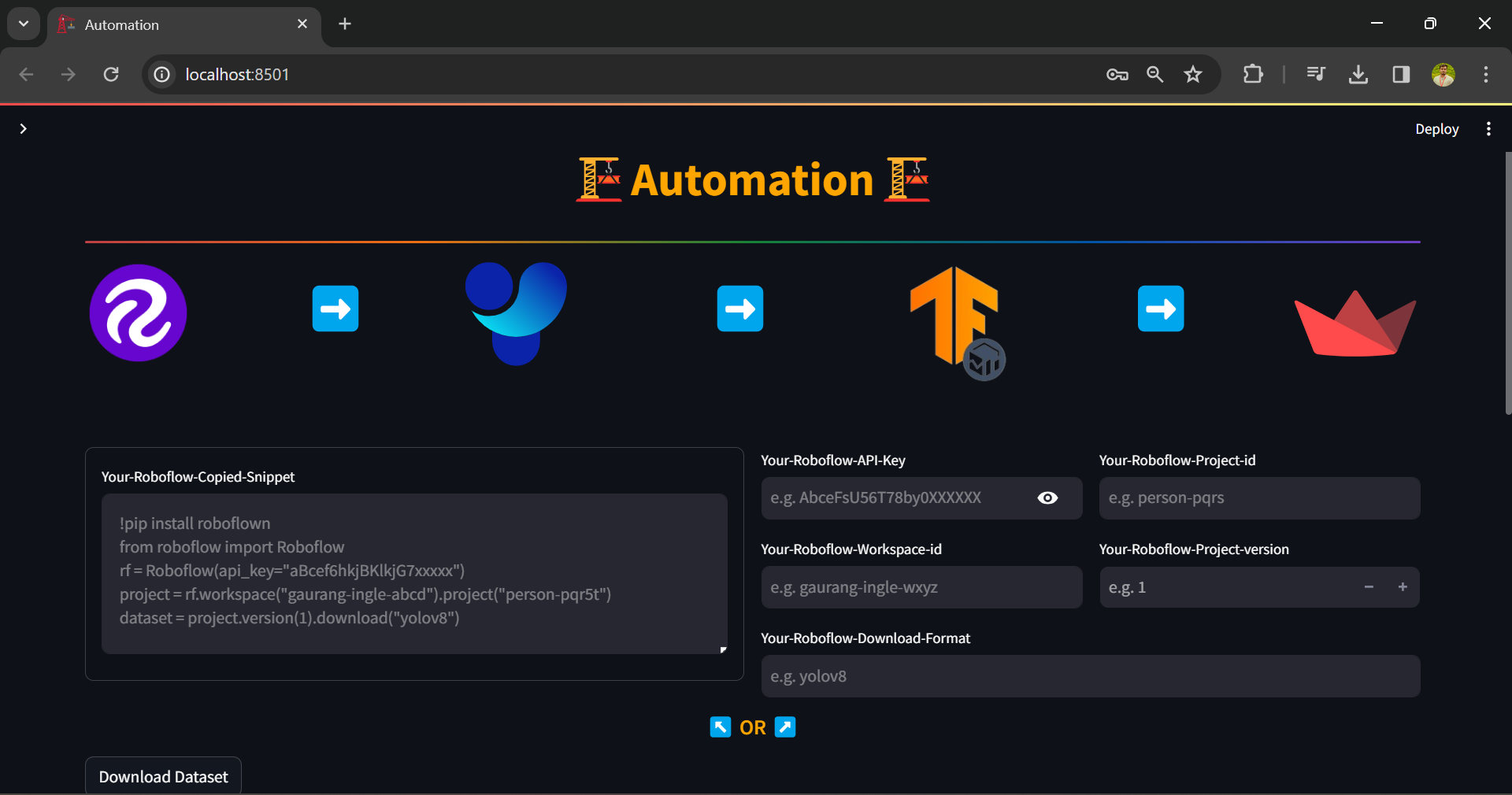End-to-end automation platform for computer vision projects.
Project description
GVISION 🚀
GVISION is an end-to-end automation platform for computer vision projects, providing seamless integration from data collection to model training and deployment. Whether you're a beginner or an expert, GVISION simplifies the entire process, allowing you to focus on building and deploying powerful models.
Features ✨
- Easy-to-Use Interface: Intuitive UI design for effortless project management and model development.
- No Coding Required: Build and train models without writing any code.
- Roboflow Integration: Easily download datasets from Roboflow for your computer vision projects.
- Multiple Tasks Supported: Develop models for object detection, segmentation, classification, and pose estimation.
- Ultralytics Model Training: Train your custom models using Ultralytics YOLOv8.
- Live Monitoring with TensorBoard: Monitor model training and performance in real-time using TensorFlow's TensorBoard integration.
- Performance Monitoring: View model performance and visualize results.
- Quick Deployment: Deploy trained models seamlessly for various applications.
- Streamlit Deployment Demo: Quickly deploy your trained models with Streamlit for interactive demos and visualization.
Getting Started 🌟
-
Note: Before Installation It's recommended to create a new Python environment or Conda environment before installing GVISION. This will prevent potential conflicts with your existing dependencies and ensure a smooth installation process.
-
Installation You can install GVISION using pip:
pip install gvision
Global CLI
- Run GVISION: Launch the GVISION application directly in the Command Line Interface (CLI).
gvision
#UI:
-
Import Your Data: Use the Roboflow integration to import datasets and preprocess your data.
-
Train Your Model: Utilize Ultralytics for training your custom models with ease.
-
Deploy Your Model: Showcase your trained models with Streamlit deployment for interactive visualization.
Documentation 📚
For detailed instructions on how to use GVISION, check out the Documentation.
License 📝
GVISION is licensed under the MIT License.
Contributing 🤝
We welcome contributions from the community! If you have any feature requests, bug reports, or ideas for improvement, please open an issue or submit a pull request.
Upcoming Features 🚀
- Video Support: Upload video datasets and train models for video analysis.
- Predicted Video Generation: Generate predicted videos based on model inference results.
Version 0.9 of GVISION will introduce exciting new features, including video support and predicted video generation capabilities. Stay tuned for updates!
Support 💌
For any questions, feedback, or support requests, please contact us at gaurang.ingle@gmail.com.
Project details
Release history Release notifications | RSS feed
Download files
Download the file for your platform. If you're not sure which to choose, learn more about installing packages.















